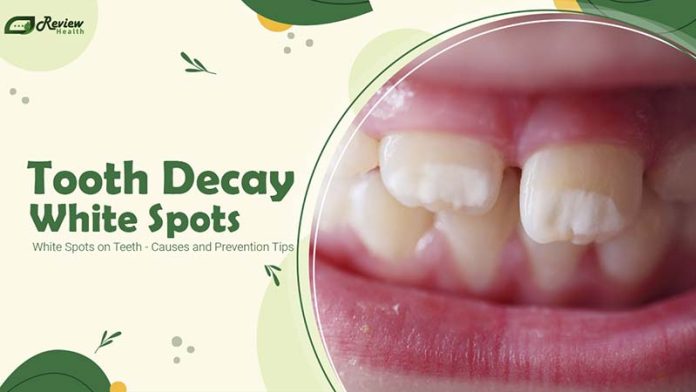White teeth can signify excellent dental health, and many people strive to maintain a brilliantly white smile through daily brushing, regular dental cleanings, and the use of teeth-whitening products. However, sometimes tooth decay white spots on teeth appear, presenting as blotches that are a different shade from the rest of the tooth surface. These spots can be troubling for some. Tooth decay white spots on teeth may indicate early signs of decay, making it crucial to determine their cause.
What Do the White Spots on the Teeth Look Like?
White spots on teeth can come in different appearances, resembling chalky white, yellow, or brown discolorations on the tooth surface. These spots are often quite visible and might indicate tooth decay or other conditions such as fluorosis, enamel hypoplasia, or demineralization.
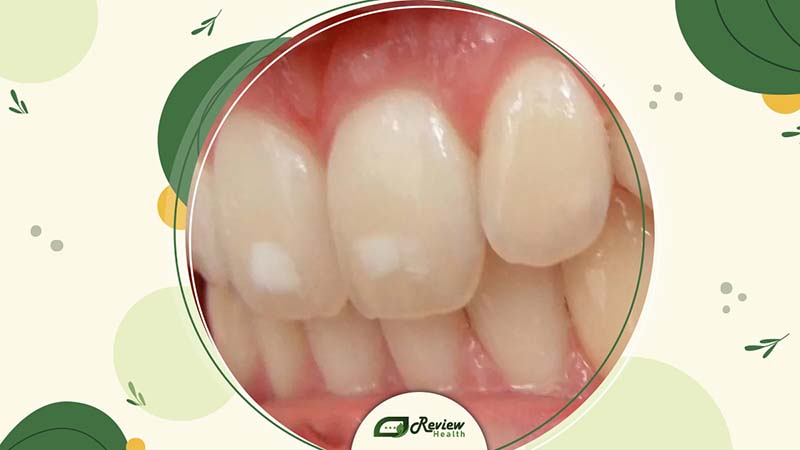
Eight Causes of White Spots On Teeth
White spots on teeth can stem from various factors. Your dentist can pinpoint specific causes and recommend the most suitable treatment for your situation. Common causes include:
Starting Stages of Tooth Decay
When teeth begin to decay, the demineralization process can lead to white spots. These spots often indicate early signs of changes in tooth enamel due to acid exposure from bacteria in plaque.
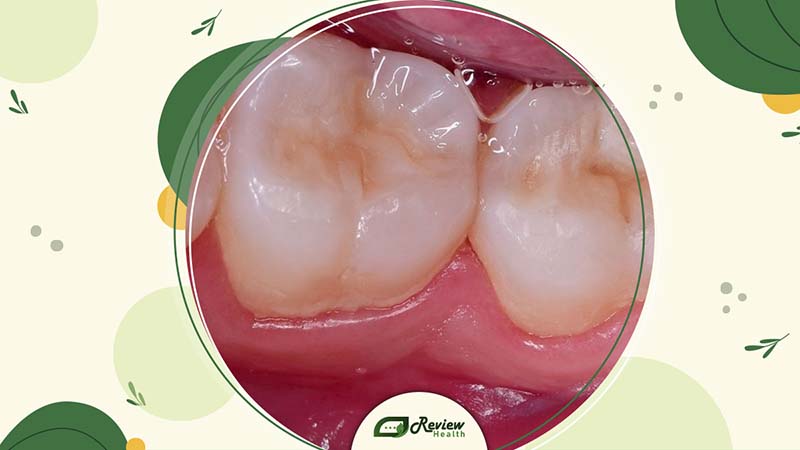
See more: 7 Stages of Tooth Decay: A Guide to Prevention and Treatment
Stains from Certain Antibiotics
Some antibiotics, like tetracycline, can cause discoloration or white spots if taken during tooth development, typically in childhood.
The Buildup of Plaque
White spots on teeth can also result from the accumulation of bacterial plaque, often due to inadequate dental hygiene such as irregular brushing or flossing. They may also occur as a consequence of wearing braces. After removing braces, these spots, caused by plaque deposits underneath or around brackets, may appear. Insufficient oral hygiene or difficulty in removing plaque between brackets leads to demineralization of the tooth, resulting in rough and chipped areas.
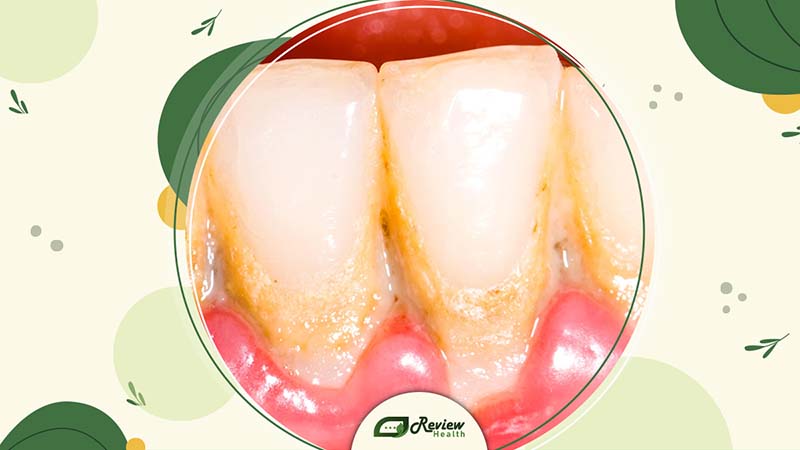
Too Much Fluoride
Ingesting excessive fluoride can cause fluorosis, leading to teeth discoloration that appears chalky white, yellow, or brown. This can result from swallowing toothpaste, consuming overly fluoridated water, or taking fluoride supplements.
Dry Mouth
Insufficient saliva can cause dry mouth, raising the risk of tooth decay and white spots due to inadequate removal of food particles and bacteria.
Using Braces for Teeth Alignment
Wearing braces might cause white spots on teeth, often becoming noticeable after the braces are removed. If teeth under the braces are not cleaned properly, plaque can accumulate around the brackets, leading to demineralization of the tooth surface. Consulting with your dentist about maintaining proper oral hygiene while wearing braces is advisable.
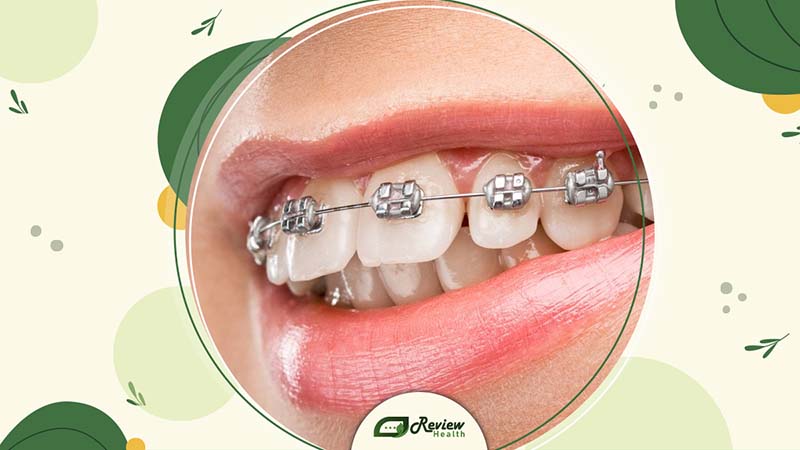
Diet
Consuming acidic foods excessively can lead to white spots on teeth as these foods erode tooth enamel, the protective outer layer. A high-sugar diet can also promote the formation of acidic plaque, which can further erode enamel. Acidic foods and beverages include sodas and certain fruits like lemons, oranges, and grapefruit. Acid reflux can also contribute to enamel breakdown, accompanied by symptoms such as sensitivity to hot or cold foods and drinks.
Weak Tooth Enamel from Birth
Enamel hypoplasia, a tooth defect characterized by thinner enamel than normal, can result from various factors including hereditary factors, vitamin deficiencies, medications taken by the mother before birth, tooth trauma, and preterm births. Consulting with a dentist is essential for proper diagnosis and management of enamel hypoplasia.
How to Get Rid of White Spots on Teeth?
Several treatments can effectively address white spots on teeth, depending on the underlying cause and the individual’s dental condition.
Topical Fluoride Usage:
Your dentist may prescribe a fluoride dentifrice with a concentration of 5,000 ppm. Topical fluoride application can help remineralize enamel and reduce the appearance of white spots.
Microabrasion:
Microabrasion, as outlined in the World Journal of Clinical Cases, enhances teeth appearance by gently removing a thin layer of surface enamel. Combining microabrasion with other whitening treatments can amplify its effects.
Bleaching-based Whitening:
Bleaching-based whitening methods can help balance tooth enamel color. Discuss with your dentist the options of in-office whitening or dental-supervised take-home kits. Over-the-counter whitening products like toothpaste, gels, and strips are available but may require longer treatment durations. Consult with your dentist to determine the most suitable approach for you.
Porcelain Veneers:
Porcelain veneers consist of thin ceramic layers custom-made to bond to the front of your teeth. This option is ideal for cases where discoloration persists despite bleaching attempts alone. Veneers provide natural-looking, stain-resistant results.
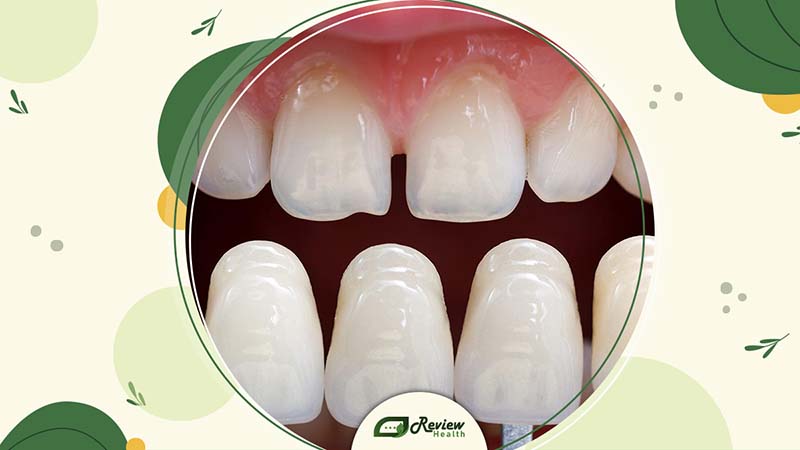
Effective Strategies to Prevent White Spots on Teeth
Preventing white spots on teeth requires consistent adherence to good dental hygiene practices. Here are some effective strategies:
Regular Brushing and Flossing:
Use of Waterpik:
A Waterpik can effectively remove plaque that gathers around braces brackets and in between teeth. Incorporating a Waterpik into your oral care routine can help prevent the formation of white spots.
Toothpaste for Remineralization:
Consult your dentist about toothpaste specifically formulated to remineralize enamel and safeguard your teeth against white spots. These toothpaste products can aid in maintaining optimal dental health.
Dietary Modifications:
Reduce your consumption of sugary and acidic foods to protect enamel and prevent white spots from developing. Cutting down on sugar and acidic food intake can contribute to overall dental health.
Healthy Habits During Pregnancy:
If you’re expecting, quitting smoking can support healthy tooth development in your child. It’s essential to prioritize oral health during pregnancy for both you and your baby’s well-being.
Monitoring Fluoride Exposure:
Monitor your children’s fluoride exposure, especially during tooth brushing. Ensure they use an appropriate amount of toothpaste (a pea-size amount) and avoid swallowing toothpaste while brushing. Be mindful of the fluoride content in beverages like fruit juices, bottled water, and soft drinks, and adjust their intake accordingly.
Conclusion
Tooth decay white spots on teeth are usually not a cause for excessive concern, and individuals can opt to treat them for cosmetic reasons if desired. Dentists can suggest interventions like professional whitening or veneer application to enhance the uniformity of tooth color.
Anyone feeling anxious about white spots on their teeth should schedule a dental examination for proper evaluation and personalized advice. Regular dental check-ups are essential for maintaining optimal oral health and addressing any concerns promptly. Keep informed and stay healthy with the resources available at Review Health.

